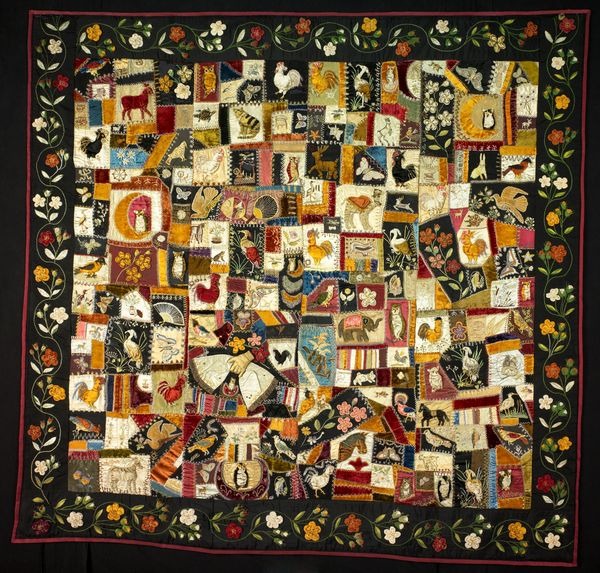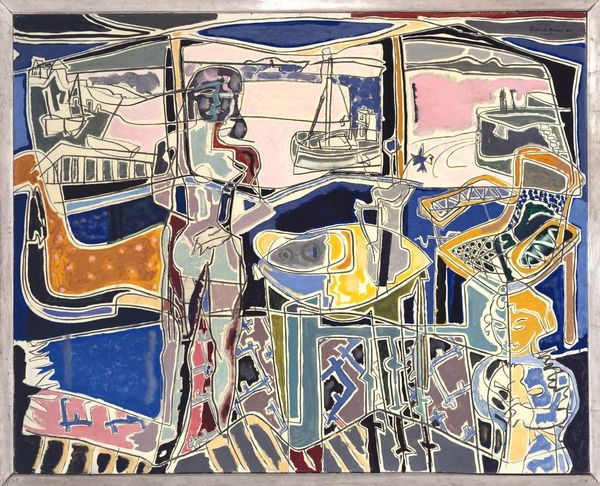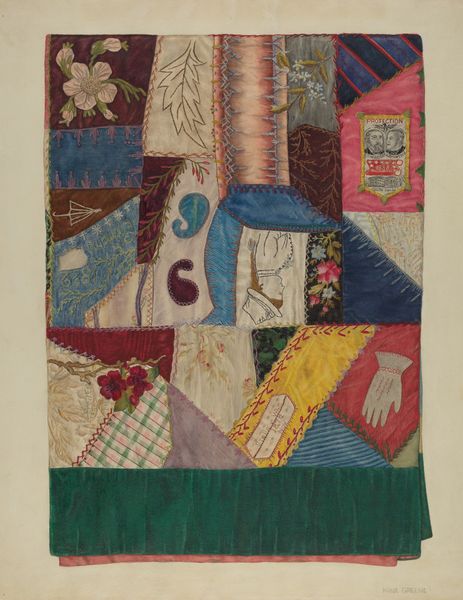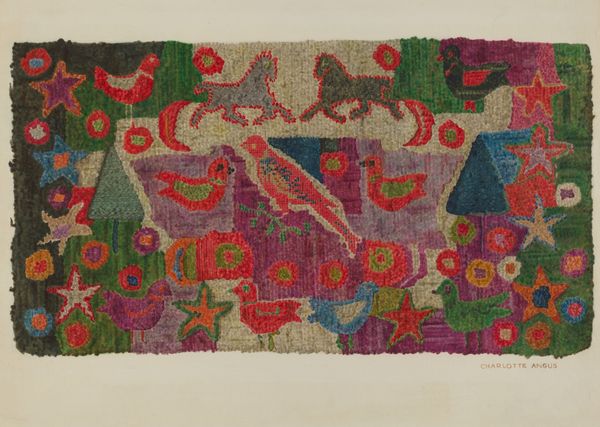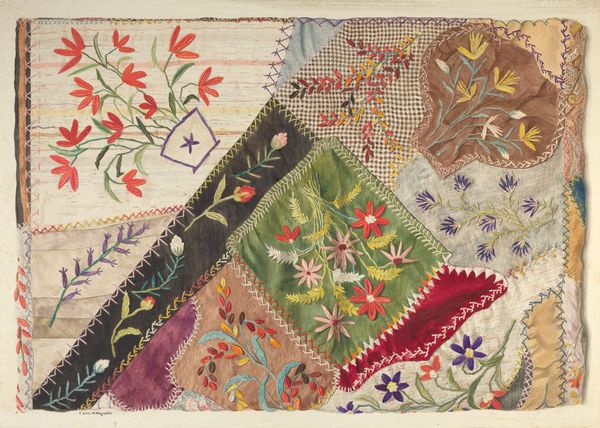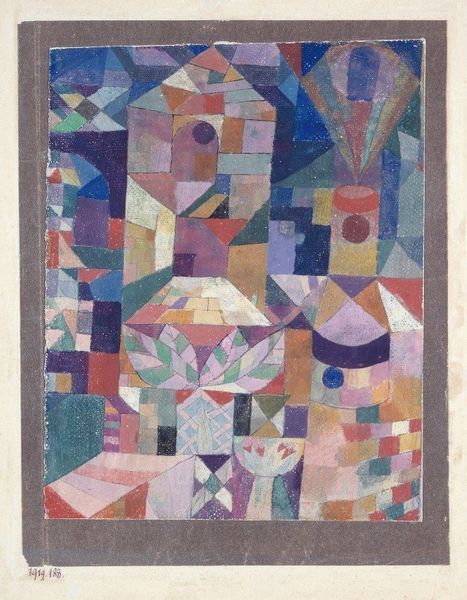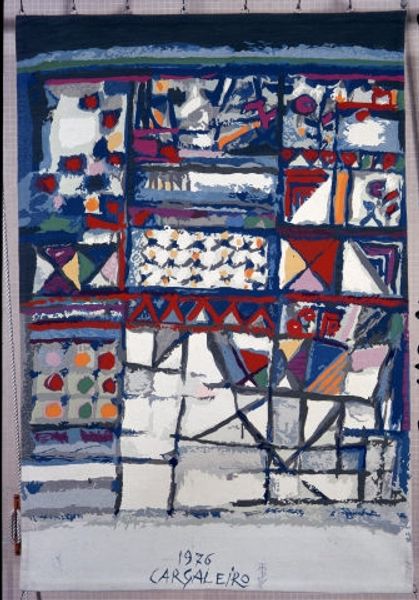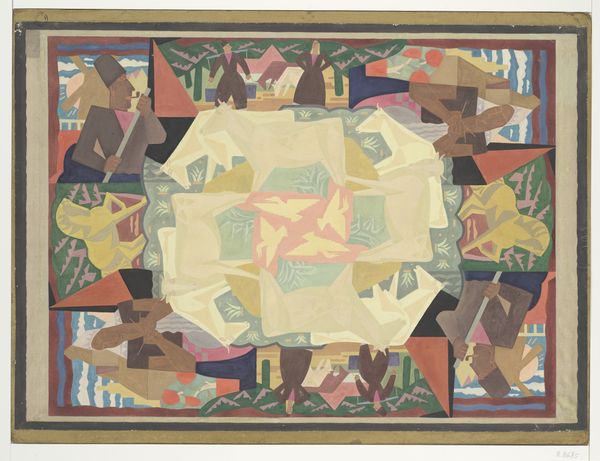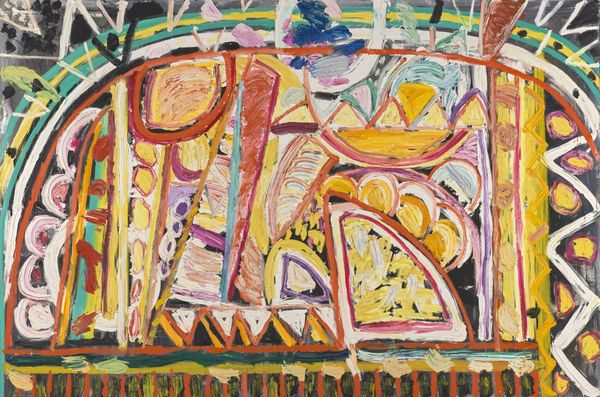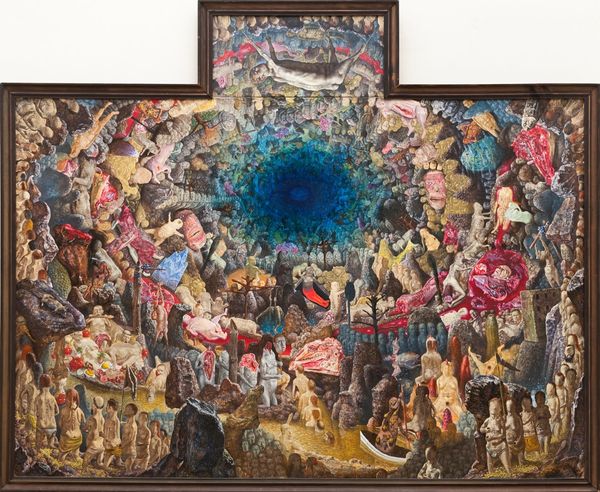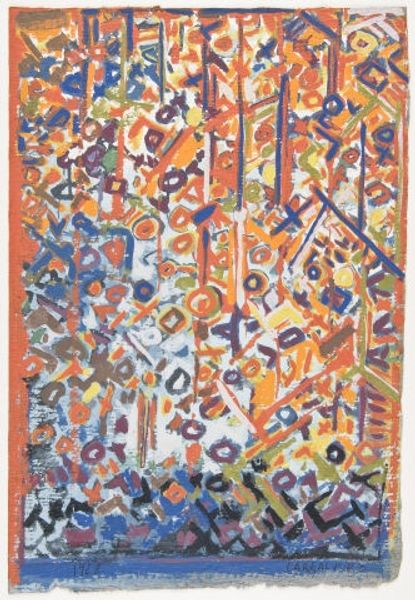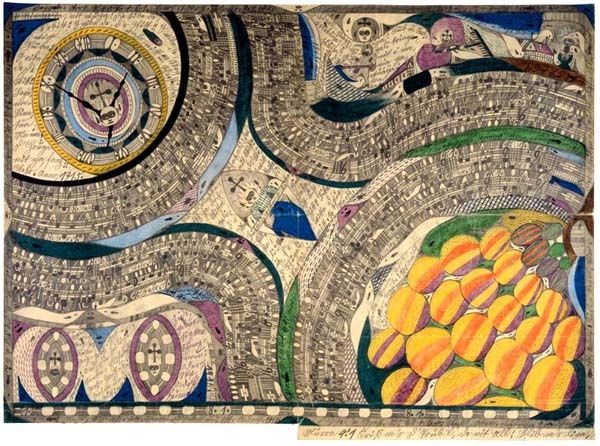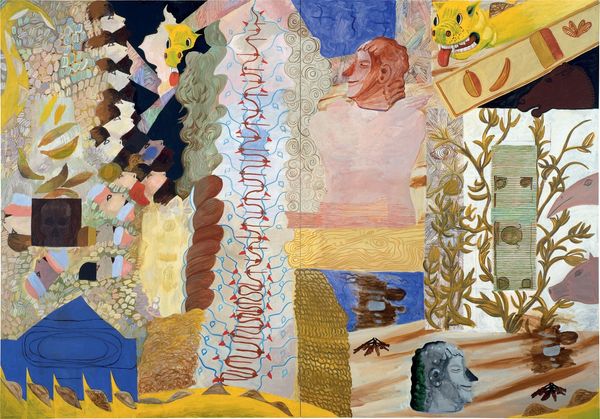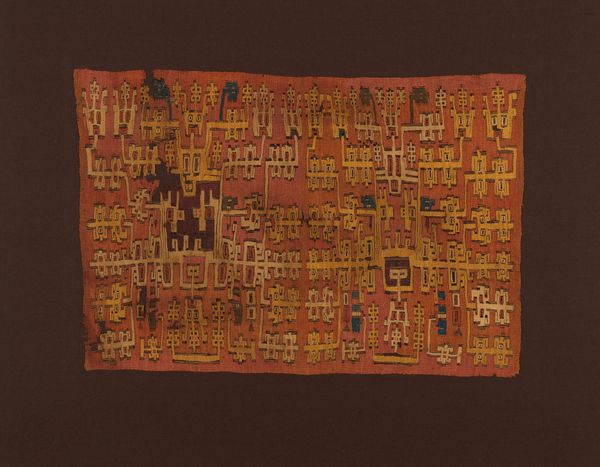
weaving, textile
#
portrait
#
weaving
#
landscape
#
textile
#
figuration
#
child
#
expressionism
Dimensions: 265 x 289 cm
Copyright: Public Domain
Curator: Ernst Ludwig Kirchner's textile work, "Life," created between 1928 and 1932, immediately strikes me. There's a curious blend of naivete and sophistication in the composition, a visual tension that’s rather compelling. What are your initial thoughts? Editor: It certainly has a unique texture and weight to it. It looks to be a labor-intensive weaving and tapestry piece. It would be nice to learn about the conditions surrounding the textile production: how it might connect to the local weaving industry, his own labor relations and artistic compensation in relation to that of the workers in the textile industry at the time. Curator: Absolutely. The weaving as a medium complicates notions of high art, challenging traditional hierarchies. But consider how Kirchner uses color: those vibrant pinks, blues, and greens set against darker backgrounds create a sense of depth, almost mimicking a landscape. And the figures themselves, though stylized, are arranged in a way that directs the eye, don't you think? There is semiotic intent being realized through both material and structure. Editor: Yes, though it's the functionality of the textile, its accessibility and potentially widespread usage, that really capture my attention. Was this piece commissioned? Was it intended for domestic use or a more public display? Curator: The figuration certainly presents symbolic content related to life stages, from infancy to adulthood, which feels like something Kirchner developed later in his career. Do you think the domestic function of the artwork plays against his engagement with complex themes like isolation or societal unrest through its use? Editor: Without knowing more about how Kirchner understood and approached labor in his own artistic creation and in relation to that of craftspeople, it is hard to discuss such potential contradictions. He could have a keen and developed material awareness. And the expressionistic style and bold patterns challenge traditional domestic aesthetics and, again, question assumptions about artistic authorship versus craft labor. What further details are available about his compensation as an artist in relation to textile artisans in the area where this was created? Curator: Well, that speaks to Kirchner's complicated relationship with traditional society as well, reflected in his expressionist works generally. Thanks for prompting a more thorough view! Editor: Always important to place material conditions front and center when engaging with artwork of this period.
Comments
stadelmuseum about 2 years ago
⋮
An allegory on life as a tapestry: the colourful multi-figured scene shows a mountain landscape with two paths laid out symmetrically. On the left, we see a shepherd scene with a dog and other animals, on the right, the ages of man from young to old. In the lower part, four couples symbolise different forms of life. The artist juxtaposes a modern, urban-looking dancing couple with a peasant couple dressed in folkloristic costumes. Four women squat in between, two naturally naked, two wearing lushly patterned garments. The whole depiction lives from its strong colour contrasts and a clear arrangement of its pictorial elements across the surface.In 1927, his friend and patron Carl Hagemann commissioned Kirchner to design a tapestry for his Frankfurt home. Numerous letters and several sketches document the creative process. At the end of the same year or beginning of the next, Lise Gujer wove the carpet according to Kirchner's instructions as a door curtain with a central opening, which was then closed in 1932. This transformed the woven work into a tapestry made wider by two narrow, predominantly black stripes. Kirchner's painting drew on his involvement with the art of weaving. The style of his paintings created from the mid-1920s onwards is therefore also referred to as his "carpet style".
Join the conversation
Join millions of artists and users on Artera today and experience the ultimate creative platform.
